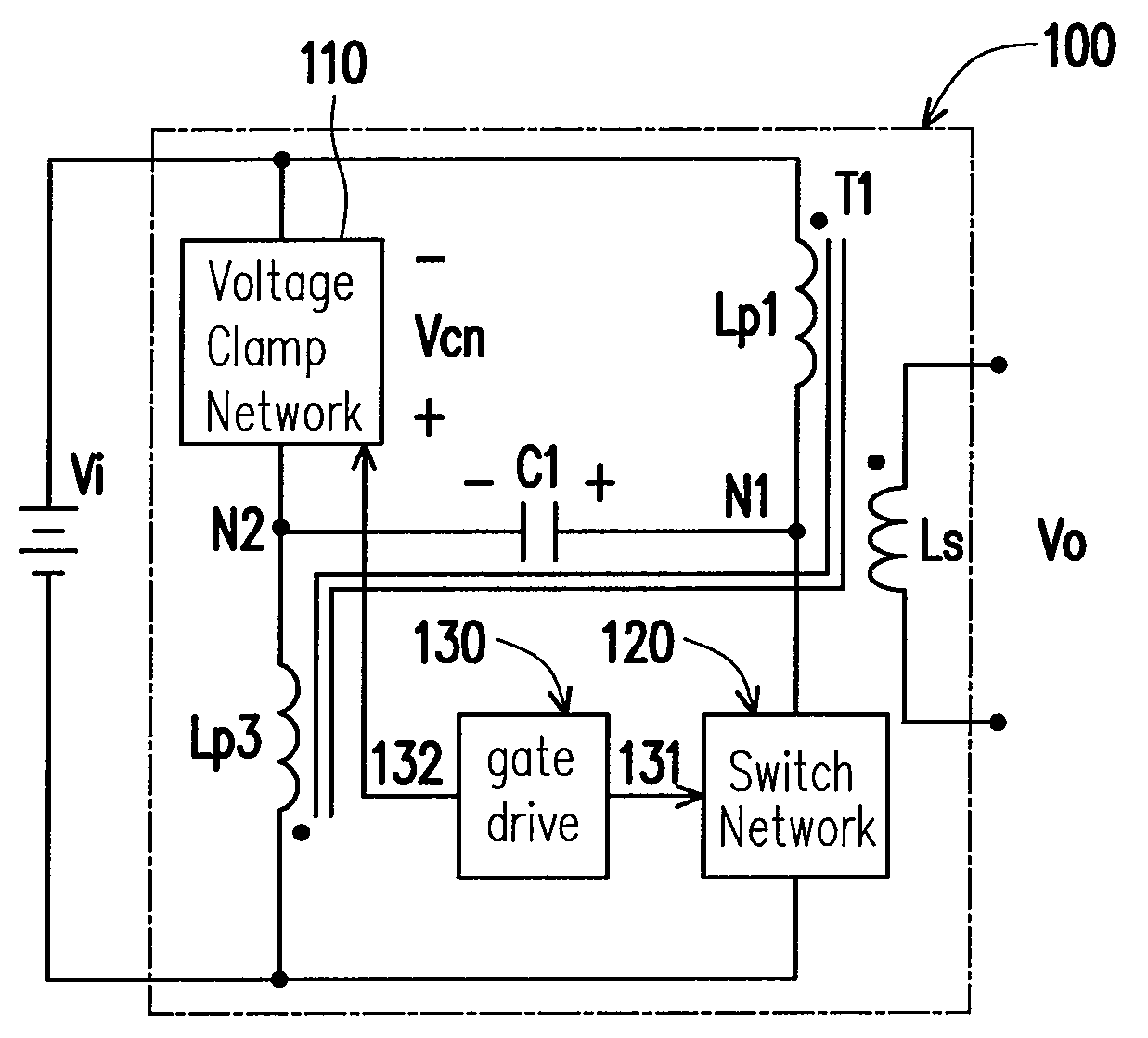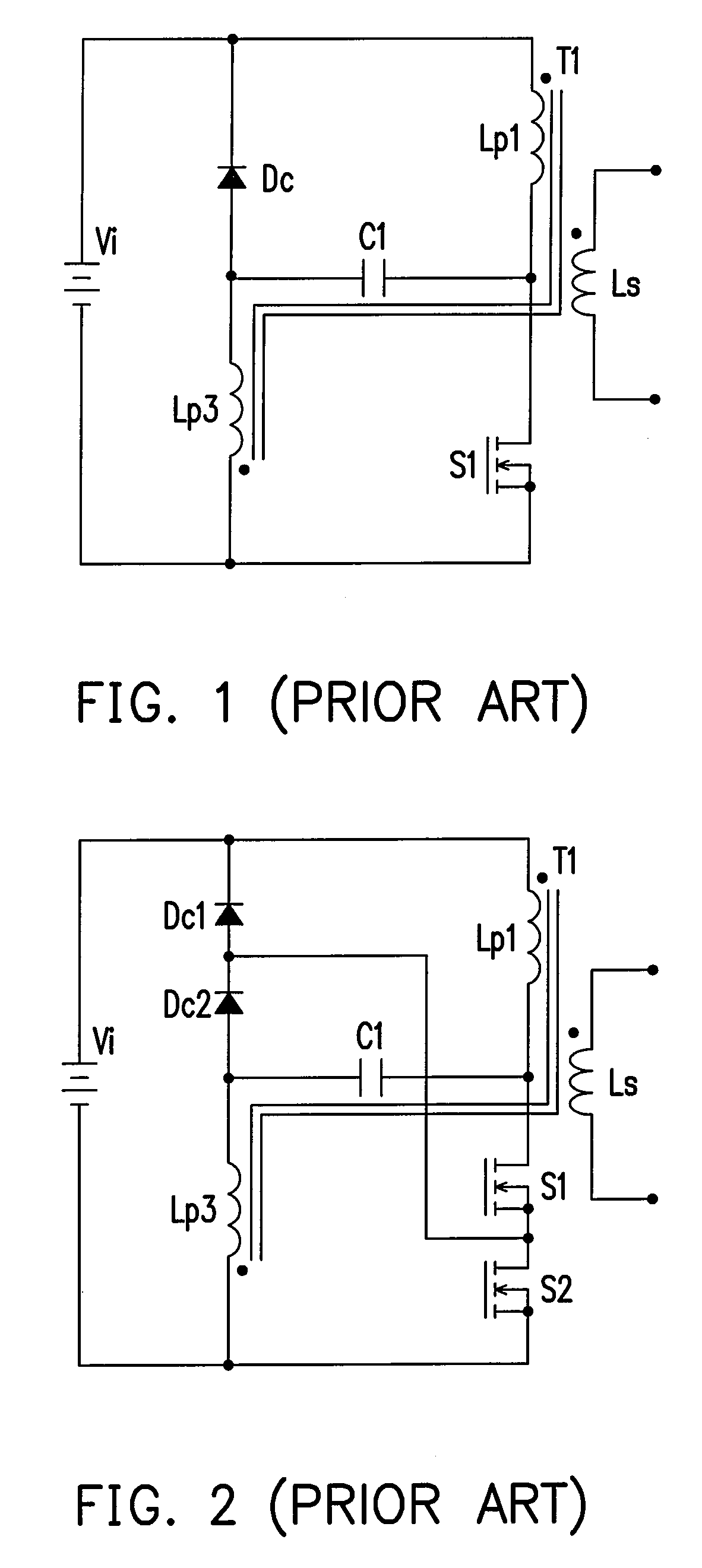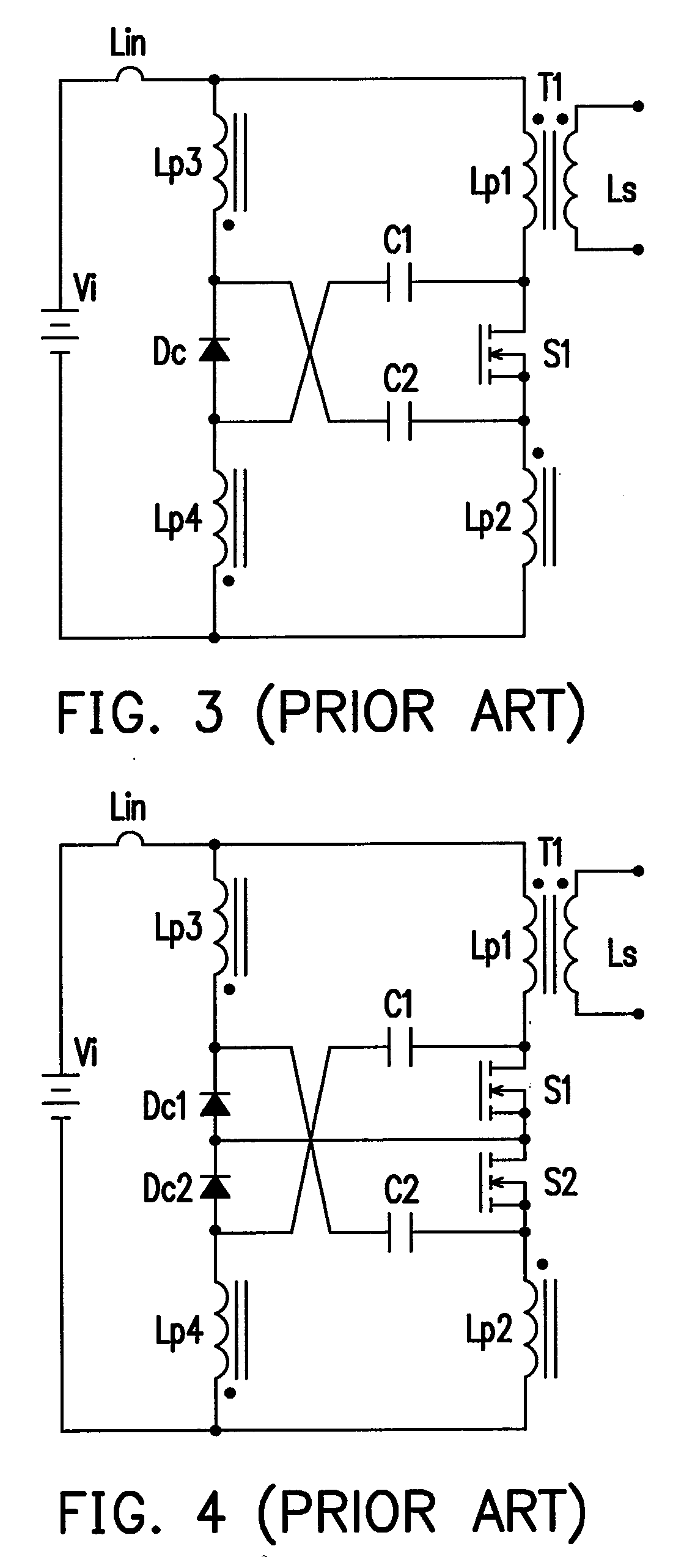Voltage-clamp power converters
a power converter and voltage clamp technology, applied in the field of power converters, can solve the problems of failure of the converter, emi problems, voltage stress may be too high for available semiconductor switches in many other applications, and achieve the effects of reducing input current ripple, reducing emi problems, and improving converter efficiency
- Summary
- Abstract
- Description
- Claims
- Application Information
AI Technical Summary
Benefits of technology
Problems solved by technology
Method used
Image
Examples
Embodiment Construction
[0035]As illustrated in FIG. 5 is a circuit diagram of the power converter 100 to introduce the broad concept of resetting a transformer by transferring energy to reset winding via the capacitors of the present invention. The circuit used to convert a DC input to an AC output comprises two series circuits, one capacitor C1, and one transformer T1. The transformer T1 has two identical primary windings Lp1 and Lp3 and at least one secondary winding Ls. Both series circuits are connected in parallel with the DC input source Vi. The first series circuit comprises the first transformer primary winding Lp1 and one switch network 120; while the second series circuit comprises the voltage-clamp network 110 and the secondary transformer primary winding Lp3. The switch network 120 comprises at least one semiconductor switch and the voltage-clamp network 110 comprises at least one active or one passive voltage-clamp cell. The active voltage-clamp cell is formed by a MOSFET Sc series-connected ...
PUM
 Login to View More
Login to View More Abstract
Description
Claims
Application Information
 Login to View More
Login to View More - R&D
- Intellectual Property
- Life Sciences
- Materials
- Tech Scout
- Unparalleled Data Quality
- Higher Quality Content
- 60% Fewer Hallucinations
Browse by: Latest US Patents, China's latest patents, Technical Efficacy Thesaurus, Application Domain, Technology Topic, Popular Technical Reports.
© 2025 PatSnap. All rights reserved.Legal|Privacy policy|Modern Slavery Act Transparency Statement|Sitemap|About US| Contact US: help@patsnap.com



